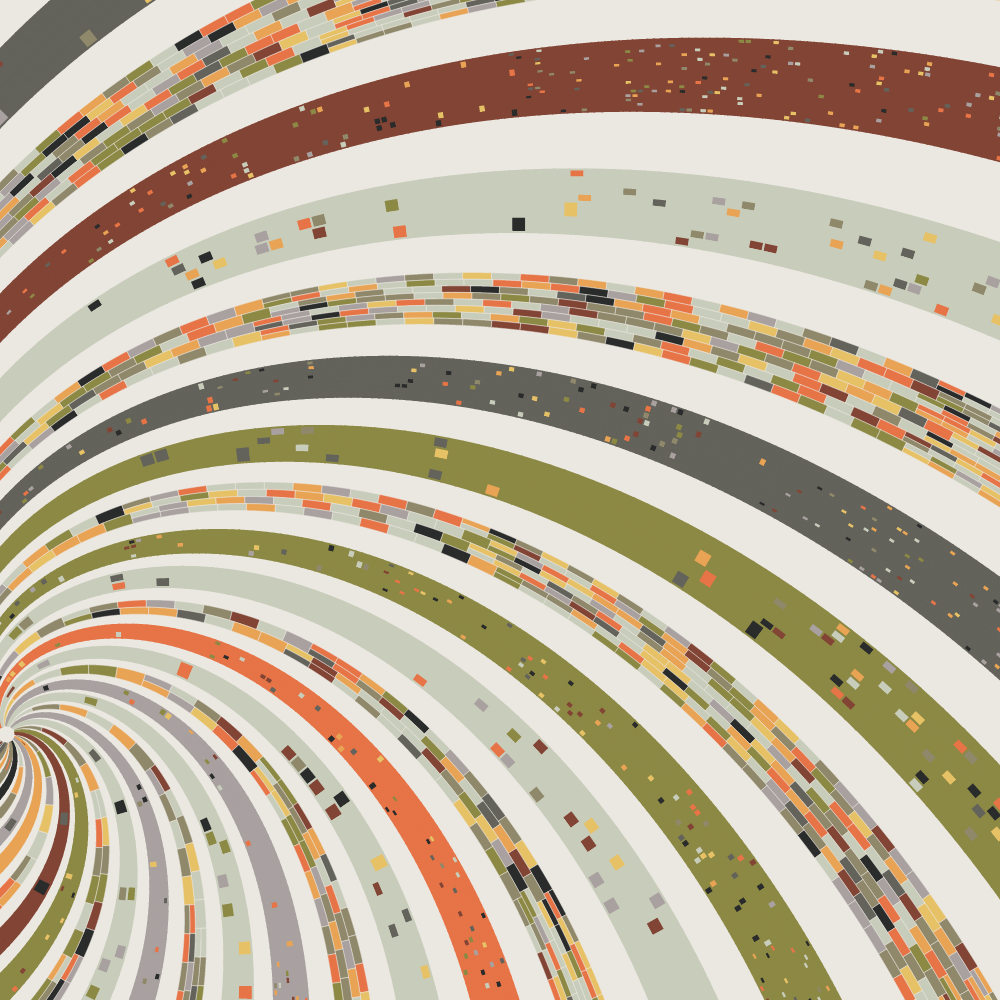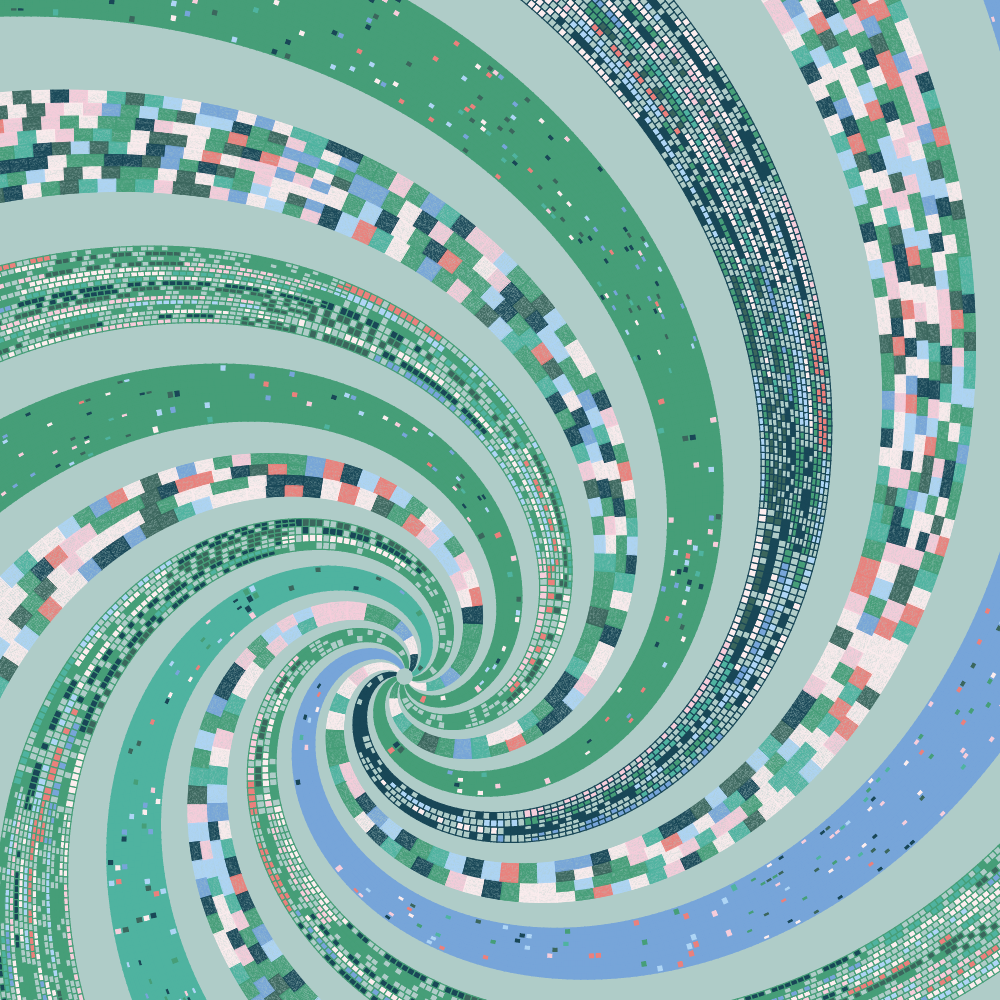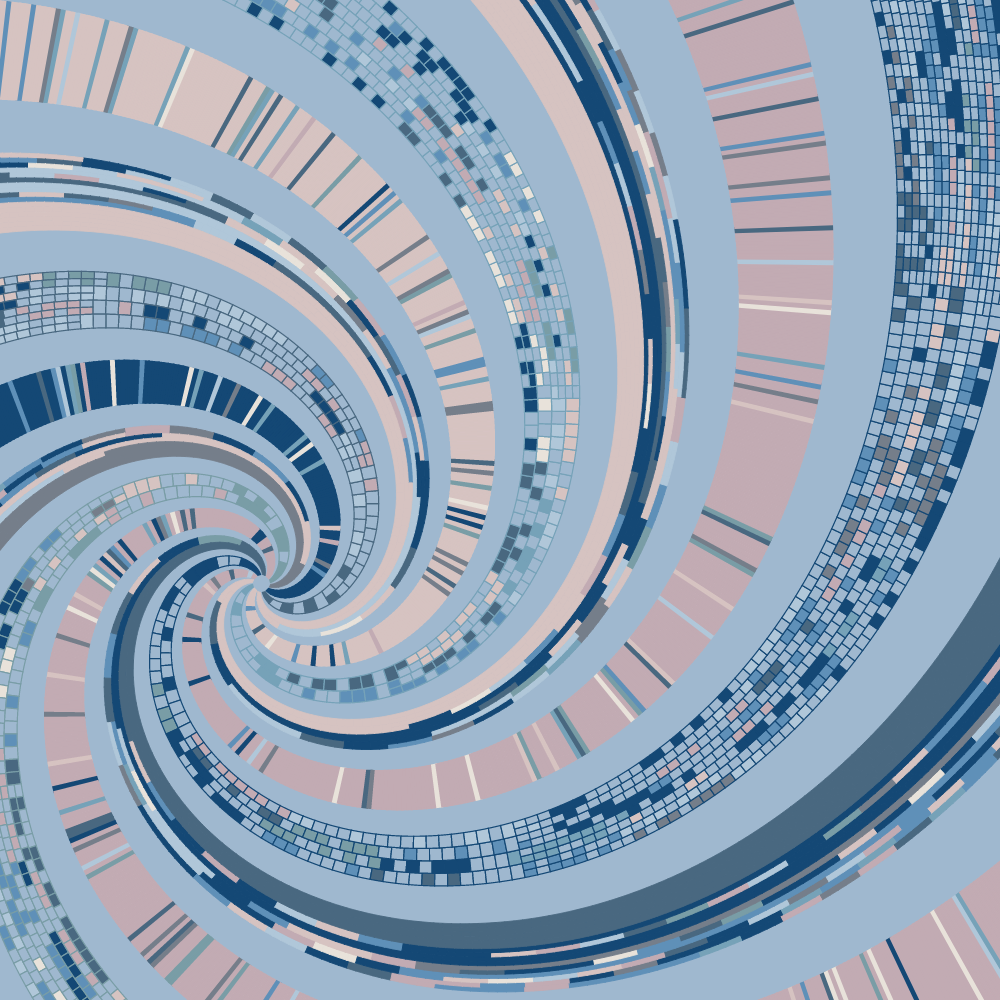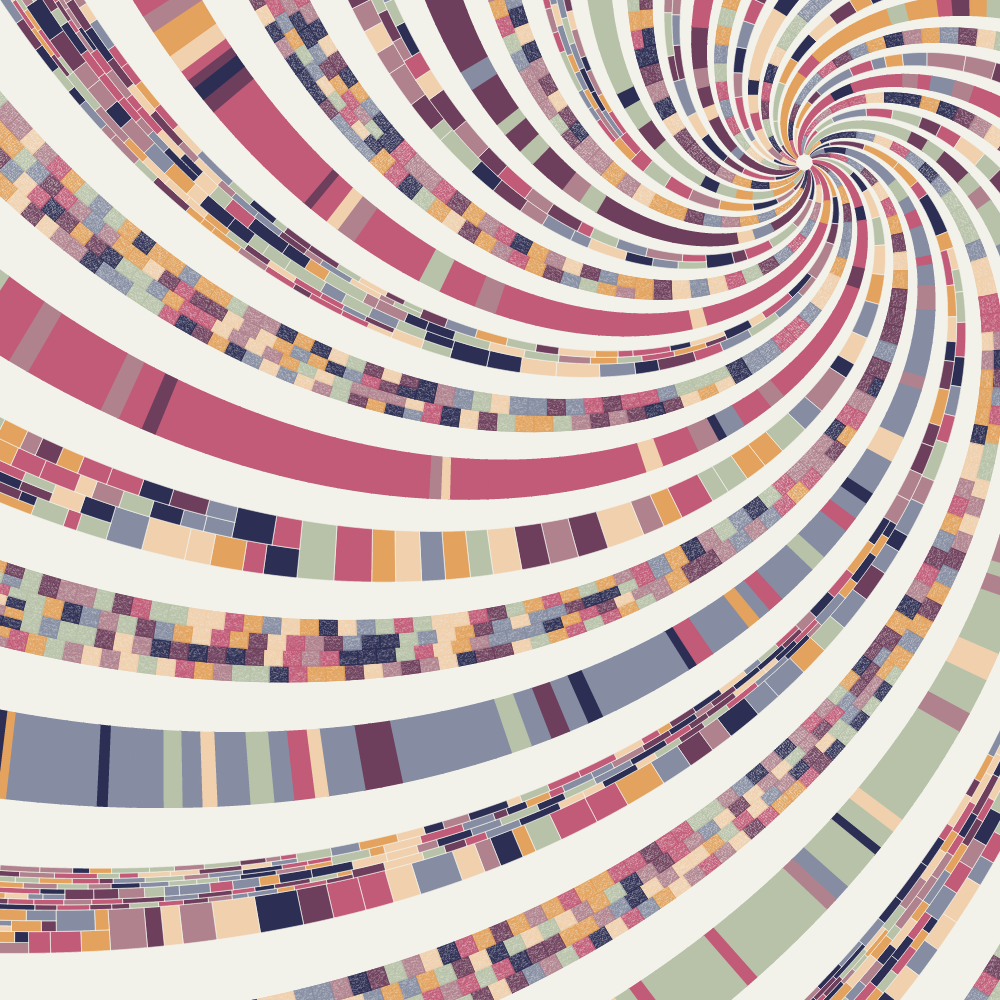by Paulo Silva
Spirali
IPFS

14 September 2022•TEZOS•IPFS
INSPIRATION
Spirali was inspired by Tyler Hobbs' work with flow fields. However, instead of selecting random starting points for each shape to be drawn, which is more usual in flow fields works, I wanted to constrain the starting points to certain positions so that the shape being drawn could expand freely without the risk of colliding with other shapes, that's when I got to the spiral flow field.
WHY SPIRALI?
The name of this collection is not only a direct translation of spirals in Italian, but it is also related to Italian cuisine and my own personal experience in Italy. The relationship with Italian cuisine is due to the immense number of types of pasta that exist, including one called spirali. When I was a child I only knew three or four types of pasta, but when I became a bit older I was amazed to learn that there were many more. Actually, there are hundreds. Just like from the same type of basic dough, you can make hundreds of types of pasta, my idea was, from just one type of spiral flow field, to make hundreds of images. A strategy of forcing creativity by imposing a major constraint.
The name of this collection also relates to my personal experience because it was visiting Italy many years ago that I first became interested in art and design because of the beautiful buildings, churches and works of art that I came across.
DESIGN STRATEGY
A spirali is made up of several tails and each tail is made up of a basic element, which I called slice. A tail may have from one to thousands slices. It is mainly the variation in the number of slices and how they are colored that creates the different tail styles in each spirali.
The slices start at the center of the spiral and in each iteration they grow a certain length or split in two depending on the parameters used in the algorithm, which also determine the outline and fill of each slice when it is rendered.
FEATURES
The main features that a spirali can have are:
- Styles: Refers to the drawing patterns of each tail, that means, the shape, fill and stroke of the slices that form the tail. There are about 16 possible styles from which the algorithm will choose about 3 for each spirali.
- Zoom out: It is related to how much larger the flow field area is in comparison to the image area. There are two possibilities: 50% and 100%.
- Curvature: An arbitrary measure of the rate the tails of a spirali are turning. A spirali can have high or low curvature.
- Rotation: The rotation direction: clockwise or counterclockwise.
- Tails: The number of tails in a spirali.
- Palette: The palette's name. There are about 14 possible palettes.
COMMANDS:
- Press "m" to export a medium resolution image (2000px x 2000px);
- Press "h" to export a high resolution image (6000px x 6000px);
LICENSING
Please see license.txt file.
Twitter: @PauloSilvaGArt
Site: https://paulosilva.art
Spirali was inspired by Tyler Hobbs' work with flow fields. However, instead of selecting random starting points for each shape to be drawn, which is more usual in flow fields works, I wanted to constrain the starting points to certain positions so that the shape being drawn could expand freely without the risk of colliding with other shapes, that's when I got to the spiral flow field.
WHY SPIRALI?
The name of this collection is not only a direct translation of spirals in Italian, but it is also related to Italian cuisine and my own personal experience in Italy. The relationship with Italian cuisine is due to the immense number of types of pasta that exist, including one called spirali. When I was a child I only knew three or four types of pasta, but when I became a bit older I was amazed to learn that there were many more. Actually, there are hundreds. Just like from the same type of basic dough, you can make hundreds of types of pasta, my idea was, from just one type of spiral flow field, to make hundreds of images. A strategy of forcing creativity by imposing a major constraint.
The name of this collection also relates to my personal experience because it was visiting Italy many years ago that I first became interested in art and design because of the beautiful buildings, churches and works of art that I came across.
DESIGN STRATEGY
A spirali is made up of several tails and each tail is made up of a basic element, which I called slice. A tail may have from one to thousands slices. It is mainly the variation in the number of slices and how they are colored that creates the different tail styles in each spirali.
The slices start at the center of the spiral and in each iteration they grow a certain length or split in two depending on the parameters used in the algorithm, which also determine the outline and fill of each slice when it is rendered.
FEATURES
The main features that a spirali can have are:
- Styles: Refers to the drawing patterns of each tail, that means, the shape, fill and stroke of the slices that form the tail. There are about 16 possible styles from which the algorithm will choose about 3 for each spirali.
- Zoom out: It is related to how much larger the flow field area is in comparison to the image area. There are two possibilities: 50% and 100%.
- Curvature: An arbitrary measure of the rate the tails of a spirali are turning. A spirali can have high or low curvature.
- Rotation: The rotation direction: clockwise or counterclockwise.
- Tails: The number of tails in a spirali.
- Palette: The palette's name. There are about 14 possible palettes.
COMMANDS:
- Press "m" to export a medium resolution image (2000px x 2000px);
- Press "h" to export a high resolution image (6000px x 6000px);
LICENSING
Please see license.txt file.
Twitter: @PauloSilvaGArt
Site: https://paulosilva.art
128 EDITIONS
•0 RESERVES
minted
128 / 128
dutch auction
10 TEZ
Lorem ipsum project longer longer
0.00001 ETH
Lorem ipsum project longer longer
0.00001 ETH
Lorem ipsum project longer longer
0.00001 ETH
Lorem ipsum project longer longer
0.00001 ETH
Lorem ipsum project longer longer
0.00001 ETH
Lorem ipsum project longer longer
0.00001 ETH
Lorem ipsum project longer longer
0.00001 ETH
Lorem ipsum project longer longer
0.00001 ETH
Lorem ipsum project longer longer
0.00001 ETH
Lorem ipsum project longer longer
0.00001 ETH
Lorem ipsum project longer longer
0.00001 ETH
Lorem ipsum project longer longer
0.00001 ETH
Lorem ipsum project longer longer
0.00001 ETH
Lorem ipsum project longer longer
0.00001 ETH
Lorem ipsum project longer longer
0.00001 ETH
Lorem ipsum project longer longer
0.00001 ETH
Lorem ipsum project longer longer
0.00001 ETH
Lorem ipsum project longer longer
0.00001 ETH
Lorem ipsum project longer longer
0.00001 ETH
Lorem ipsum project longer longer
0.00001 ETH
Lorem ipsum project longer longer
0.00001 ETH
Lorem ipsum project longer longer
0.00001 ETH
Lorem ipsum project longer longer
0.00001 ETH
Lorem ipsum project longer longer
0.00001 ETH























